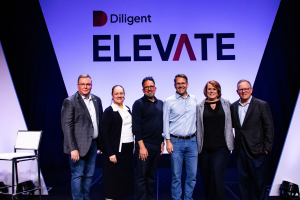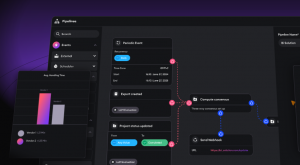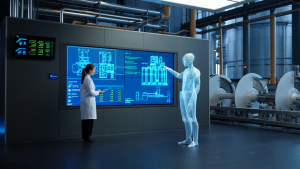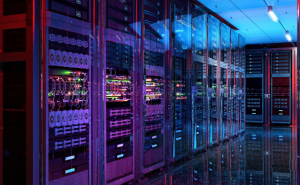Recapping AWS re:Invent’s innovation blitz, CEO Andy Jassy says much more’s on the way
In January, Amazon.com Inc. had a total of 562 million products for sale on its e-commerce website. After four days of wall-to-wall new products and services announcements this week at the re:Invent conference in Las Vegas, enterprise cloud watchers could be forgiven if they believed that Amazon Web Services Inc. now offered a similar number.
Industry analysts were provided with background on 62 announcements from Amazon’s cloud company prior to the kickoff of re:Invent this week, and the final tally exceeded that over the course of four days.
A number of the releases made major news. Highlights from four days of releases were Amazon’s unexpected entrance into the space business through management of satellite data, the decision to make its own custom cloud chip, a migration of its cloud architecture into the data center and major advancements involving machine learning and edge computing.
Against this backdrop of rapid-fire innovation came a central question asked by many in the industry today: How did Amazon come up with so many new capabilities over four days when other firms would struggle to release even half the amount?
The answer, as described by AWS Chief Executive Officer Andy Jassy (pictured), is not very complicated. It’s because customers asked for them, and with its lion’s share of the public cloud market, AWS has a lot of customers.
“When you have a business that’s several times larger than the next four providers combined, you just hit a different level of scale and you learn lessons earlier,” Jassy said. “The reason we continue to have both so much more functionality and innovate at a faster clip, and seem to get capabilities that customers want, is because we have so many more customers than anybody else.”
Jassy spoke with John Furrier and Dave Vellante, co-hosts of theCUBE, SiliconANGLE Media’s mobile livestreaming studio, during AWS re:Invent. They discussed the company’s move into chip design, the announcement of a cloudlike system for the data center, new technology for the edge and customer interest in machine learning. (* Disclosure below.)
This week, theCUBE features Andy Jassy as its Guest of the Week.
Custom chip creates buzz
With the kind of clout Amazon brings to the enterprise field, its move into a major market like semiconductors can send shock waves through an often-paranoid technology community. The company announced on Monday that it would introduce a custom chip called Graviton to be deployed by AWS users for cloud computing instances.
The news immediately raised speculation that Amazon was now setting its sights on the dominant chip supplier to major cloud players: Intel Corp. Jassy made it clear that the new chip was simply a byproduct of his company’s acquisition of semiconductor startup Annapurna Labs in 2015 and there was no interest in jeopardizing his firm’s significant relationship with the processor giant.
“Intel is a very deep partner of AWS and will be for a long time,” Jassy said. “That’s not changing.”
Support for on-premises workloads
In addition to its foray into custom chips, AWS also announced that it would dive headfirst into the data center pool. The news was seen as a major step by the company to claim an even larger share of the information technology market, since a significant amount of enterprise business remains on-premises.
With the release of Outposts, AWS will provide an on-premises data center system that is architected in the same way it runs its own cloud. Outposts includes a native AWS option for companies to run various AWS services, such as machine learning, in their data centers.
The move was driven by customer feedback around applications that were not moving to the cloud and they wanted to use the same compute and storage services within the AWS control plane, according to Jassy.
“We just have not liked the model that’s been out there so far to do this,” he said, describing the different tools and hardware that customers were facing. “They wanted compute and storage on-premises, and they want to connect with all of the other AWS applications in the cloud.”
IoT support at the edge
As AWS customers continue to run a wide range of containerized microservices, this creates a natural pathway for “internet of things” and various cloud-to-edge applications. The company provided additional definition for its edge computing strategy this week through the introduction of a number of IoT services.
These included new tools such as IoT Things Graph for building new applications and IoT SiteWise for managing data collection from sensors. AWS also released extensions for its IoT Greengrass software designed to bolster security for connected devices.
AWS’ interest in the edge is not part of a grand master plan to claim more enterprise turf, according to Jassy, but rather a response to customer demand for moving data into the cloud and performing analytics.
“We don’t have some top-down strategy that I think is grandiose; it’s just what customers want,” Jassy said. “If you look at the amount of security options for these edge devices, it’s a new field. That’s why we built a security capability.”
Machine learning gains traction
The sheer number of announcements by AWS at its conference in Las Vegas this week made it difficult to pinpoint a particular theme that stood out, but there was a clear interest by the company in furthering its presence in machine learning. The event featured a number of examples for the use of SageMaker, AWS’s machine learning platform, including DeepRacer, a one-eighth scale toy car powered by smart technology.
Using SageMaker programming software, race car enthusiasts can train the device using reinforcement learning in interactive environments. Basically, DeepRacer is an autonomous vehicle about the size of a shoebox.
Perhaps more significantly, AWS customers are beginning to focus on machine learning use cases within the stack itself. “In the machine learning space, people are blown away by how much we’ve provided in all three layers of the stack, and I think they are still getting their heads around which layer of the stack they are going to participate at,” Jassy said. “The one that probably has the most potential for companies is that middle layer because most companies now have gobs of data, and there are jewels in that.”
At times, even AWS’ top executive seemed a bit overwhelmed by the pace of innovation his company had been able to demonstrate. Some of that may be due to his privileged view of what’s also in the pipeline.
Asked about what the industry might expect from AWS in 2019, Jassy deferred the discussion for another time. “Oh my gosh, we’ve got so many things that we’re doing in 2019,” Jassy exclaimed. “I could spend all night.”
Better set the alarm, because 2019 is only one month away.
Here’s the complete video interview, part of SiliconANGLE’s and theCUBE’s weeklong coverage of re:Invent. (* Disclosure: AWS sponsored this segment of theCUBE. Neither AWS nor other sponsors have editorial control over content on theCUBE or SiliconANGLE.)
Photo: SiliconANGLE
A message from John Furrier, co-founder of SiliconANGLE:
Support our open free content by sharing and engaging with our content and community.
Join theCUBE Alumni Trust Network
Where Technology Leaders Connect, Share Intelligence & Create Opportunities
SiliconANGLE Media is a recognized leader in digital media innovation serving innovative audiences and brands, bringing together cutting-edge technology, influential content, strategic insights and real-time audience engagement. As the parent company of SiliconANGLE, theCUBE Network, theCUBE Research, CUBE365, theCUBE AI and theCUBE SuperStudios — such as those established in Silicon Valley and the New York Stock Exchange (NYSE) — SiliconANGLE Media operates at the intersection of media, technology, and AI. .
Founded by tech visionaries John Furrier and Dave Vellante, SiliconANGLE Media has built a powerful ecosystem of industry-leading digital media brands, with a reach of 15+ million elite tech professionals. The company’s new, proprietary theCUBE AI Video cloud is breaking ground in audience interaction, leveraging theCUBEai.com neural network to help technology companies make data-driven decisions and stay at the forefront of industry conversations.











